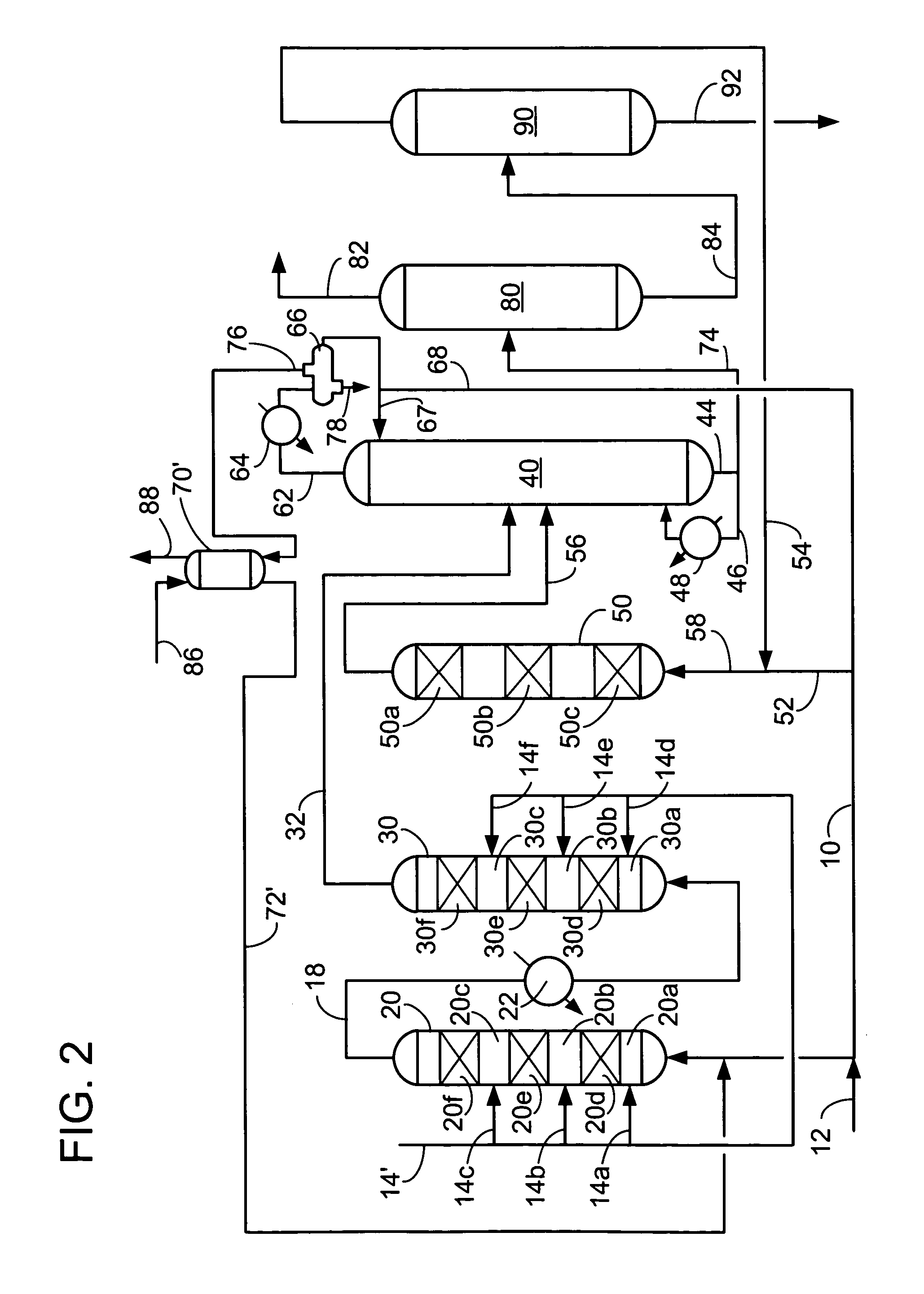Process for the high yield production of monoalkylaromatics
a monoalkylaromatic, high-yield technology, applied in the direction of organic chemistry, chemical apparatus and processes, hydrocarbon preparation catalysts, etc., can solve the problem of reducing the catalyst volume in the reactor, and achieve the effect of small catalyst volume and utility cos
- Summary
- Abstract
- Description
- Claims
- Application Information
AI Technical Summary
Benefits of technology
Problems solved by technology
Method used
Image
Examples
example i
[0056]We examined ethylbenzene yield as a function of ethylene conversion over a fixed bed for a number of catalysts. Catalyst A was a commercially made Beta zeolite supported on an alumina binder in weight proportions of 70 / 30, respectively. The Beta zeolite had a Si / Al2 ratio of about 25. Catalyst A had been extruded, with a nominal particle diameter of 1 / 16 inches, dried and calcined in air at no more than 675° C. to provide an ABD of 0.58 g / ml. Catalyst B was a crystalline aluminosilicate designated UZM-8. The UZM-8 powder was synthesized according to the teachings of U.S. patent application Ser. No. 10 / 395,466. The powder was then acid washed according to the teachings of U.S. patent application Ser. No. 10 / 395,624. The UZM-8 was extruded with alumina support in weight proportions of zeolite to Al2O3 of 70 / 30, respectively. The extruded catalyst with a nominal particle diameter of 1 / 16 inches was calcined by first heating the catalyst up to 538° C. in an inert environment and t...
example ii
[0059]We examined cumene yield as a function of propylene conversion in a batch operation. We used Catalyst A from Example I that had been crushed and screened to obtain catalyst particles of 20×40 mesh. Benzene and the catalyst were added to a batch reactor having a volume of 300 cm3 and heated to an initial reaction temperature while stirring. Propylene was added to the catalyst and benzene mixture while samples of the reaction mixture were analyzed at intervals by gas chromatography. The sampling continued after termination of propylene addition. Residence time controlled propylene conversion.
[0060]Experiments were run under three different sets of conditions shown in Table A.
[0061]
TABLE AExperimental Conditions for Partial Propylene Conversion to CumeneInitialBenzene-to-TotalReactionCatalyst-to-PropyleneResidenceTemperatureExperimentOlefin ratioratioTime (minutes)(° C.)E0.092.023.5145F6.0013.04.5155G0.091.014.5155
The results of the experiments are shown in FIG. 9. Temperature da...
PUM
| Property | Measurement | Unit |
|---|---|---|
| pressure | aaaaa | aaaaa |
| pressure | aaaaa | aaaaa |
| pressure | aaaaa | aaaaa |
Abstract
Description
Claims
Application Information
 Login to View More
Login to View More - R&D
- Intellectual Property
- Life Sciences
- Materials
- Tech Scout
- Unparalleled Data Quality
- Higher Quality Content
- 60% Fewer Hallucinations
Browse by: Latest US Patents, China's latest patents, Technical Efficacy Thesaurus, Application Domain, Technology Topic, Popular Technical Reports.
© 2025 PatSnap. All rights reserved.Legal|Privacy policy|Modern Slavery Act Transparency Statement|Sitemap|About US| Contact US: help@patsnap.com



